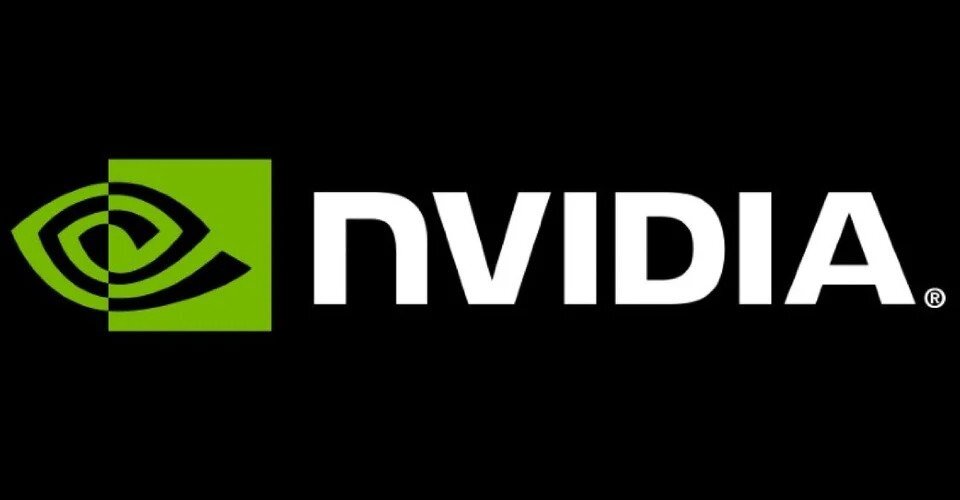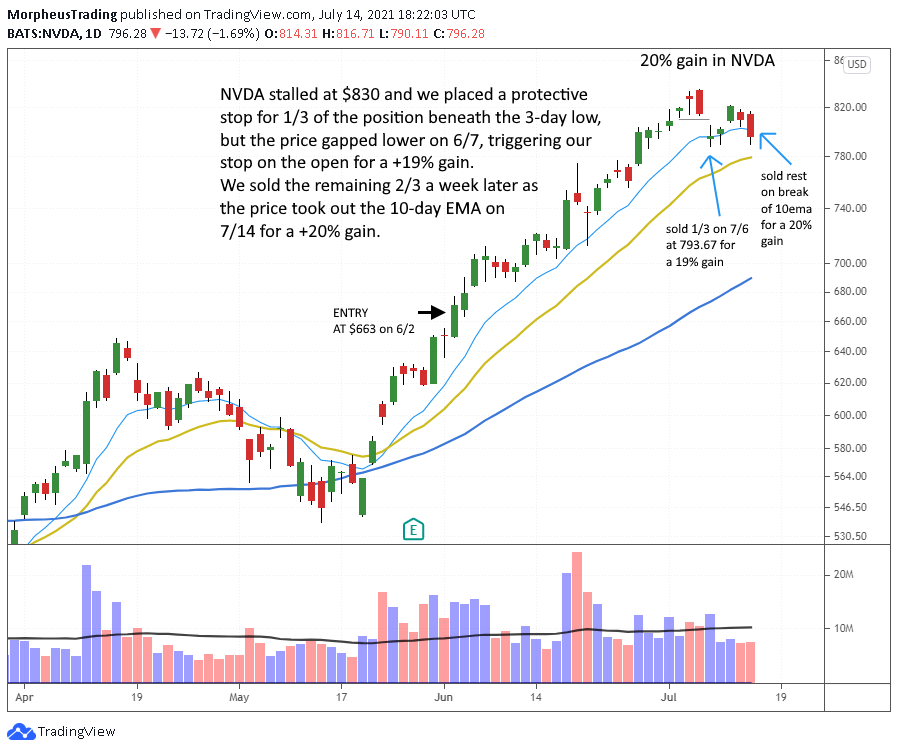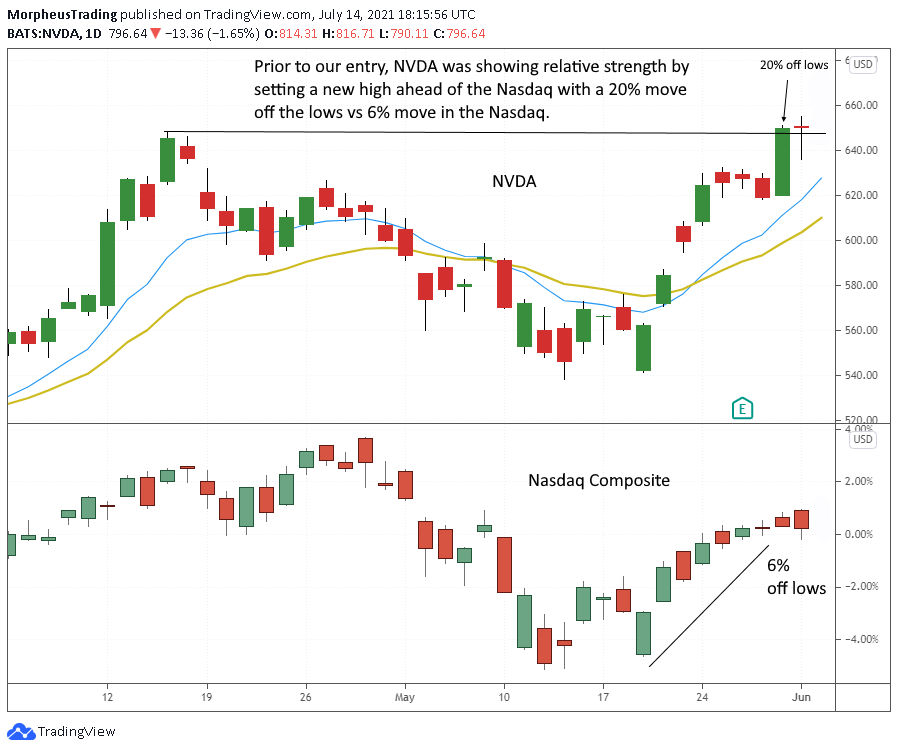After our market timing model recently generated a “buy” signal in the Nasdaq, relative strength in Nvidia ($NVDA) triggered our buy entry that led to a +20% gain. Here is a simple mini-lesson and trade review that shows you exactly how we did it.
In late May, our proprietary Market Timing Model generated a buy signal after the Nasdaq Composite reclaimed support of its 20-day exponential moving average and held above it.
One of the first stocks to show relative strength at the time was Nvidia ($NVDA), an explosive, leading growth stock.
Nvidia rallied above its downtrend line on May 21, then broke out from a bull flag pattern on May 28.

On June 2, $NVDA was listed in the Watchlist section of our stock trading report as a potential buy setup with two different entry scenarios:
- Buy on weakness – Buy if the price pulled back to support of the 10-day exponential moving average
- Buy on strength – Buy if the price rallied above the June 1 high
The latter occurred and we bought $NVDA about 2% above the high of the base–which is always the last buy point for a stock breaking out from a valid basing pattern.
In William O’ Neil’s excellent, must-read book, How To Make Money In Stocks, his system allows for buys up to 5% above the base high.
However, we prefer to not buy more than 2-3% above the base high, as 5% makes it difficult to sit through short-term pullbacks without getting shaken out.
Wagner Daily and Wagner Daily PRO subscribers were alerted to our buy entry on June 2.
The following day, we shared the chart of $NVDA below in our June 3 report:
Entry strategy: Clear relative strength made $NVDA stand out
In addition to impressive quarterly earnings and sales growth, Nvidia was showing clear relative strength by breaking out ahead of the Nasdaq.
Stocks that show such early relative strength typically become the biggest winners when the broad market follows through to the upside as well.
Specifically, $NVDA had already rallied 20% off its lows, versus just a 6% gain in the Nasdaq during the same period:
$NVDA immediately blasted higher away after our buy entry, which is what most good trades do, with the price action riding the 10-day EMA and through the $700 and $800 levels.
In terms of trade management, there isn’t much to do when a trade swiftly follows through to the upside–just sit back and enjoy the profitable ride!
Exit strategy: The sell signals to lock in profits
After two days of stalling on July 6 and 7, we placed a stop on partial position beneath support of the three-day low to protect profits in case of a substantial correction.
The stop assured a +20% gain on one-third of the position, with the plan to let profits run on the remaining two-thirds of the position–as long as the price held above the 10-day EMA (on a closing basis).
$NVDA gapped down below our stop the next day, which triggered our partial sell order on the open, but still resulted in a +19% gain.
Since the price subsequently closed below the 10-day EMA, we next raised the stop (on the remaining two-thirds position) to just below the July 8 low (plus some wiggle room).
Nvidia bounced in the next session and reclaimed its 10-day EMA.
With $NVDA back above its 10-day EMA, we definitely wanted to exit and take profits if the stock slipped back down below that pivotal level.
On July 14, $NVDA broke below its 10-day EMA and triggered the stop on the remaining two-thirds position for a +20% gain.
Both exit points are annotated on the daily chart below:
Relative strength rocks!
Relative strength, as shown on the second chart above, is a fantastic way to identify leading stocks that can turn into massive winners!
The premise is simple:
If a stock is so strong that it rallies ahead of and outperforms the gains of the Nasdaq/S&P 500 early on, then it is typically the first to rocket higher when the broad market bounces and/or starts a new uptrend.
This can not be emphasized enough!
Note that relative strength in this regard should not be confused with the RSI (relative strength index) indicator.
Another takeaway from this article is that the biggest winning stock picks tend to work out right away.
If your stock’s trend is strong and the price rides the 10-day EMA, then just sit back and let the bullish chart pattern do its work until the price action gives you an objective reason to sell.
Start my subscription to The Wagner Daily now to immediately be alerted to the next explosive winner on our radar screen. Complete with pre-set entry, exit, and target prices, our flagship swing trading report is your perfect side hustle!



